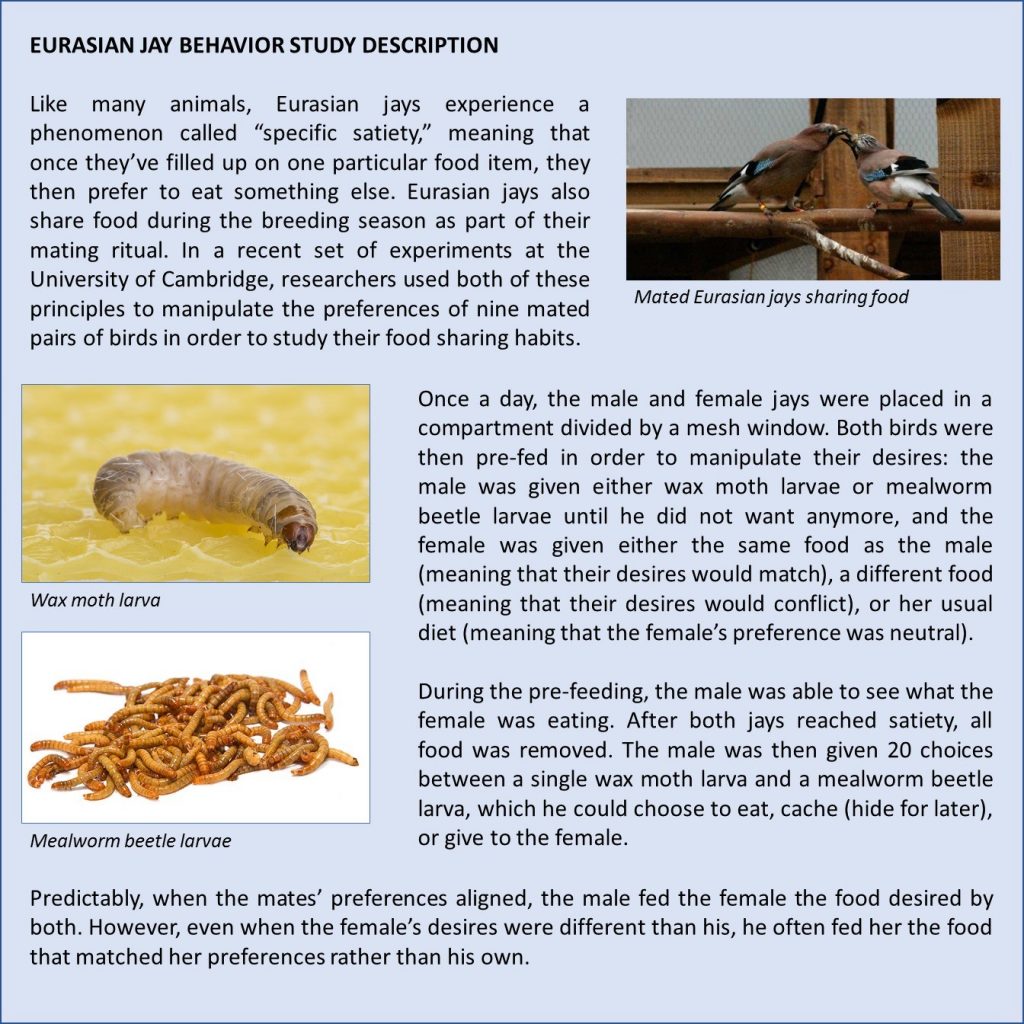Lessons in New Product Development from the Eurasian Jay
In a recent study at the University of Cambridge, researchers found that the male Eurasian jay possesses a rare and valuable talent: thoughtful gift-giving. In these experiments, each male jay demonstrated the ability to deduce which food his mate preferred to eat and offer it to her – even when her desires differed from his. Comparative psychologist Nicola Clayton notes that this behavior, referred to as “desire-state attribution,” indicates “nuanced awareness of other individuals’ thoughts and feelings” – an awareness once thought to be uniquely human. “Gift-giving is one of those great theory-of-mind tests,” says Clayton. “If you’re good at giving presents, it’s quite a good test of what you know.”

Source: The University of Cambridge
Most businesses are not in the habit of giving away their products, but they do want to create offerings that are enticing to their target customers. All over the world, businesses are hard at work ideating, designing, and developing “better” products based on what they believe to be the superior attributes of the technology they are working with. And yet, these products often fail – think the Laser Disc, Google Glass, the “new” Dodge Dart, and many other products that we’ve never even heard of from the vast world of B2B technology.
Why does this approach to product development fail so often? Because, all too frequently, these companies never pause to consider that their customers’ desires might differ from their vision. And lest we throw stones from glass houses, let’s be clear: it’s not just a product company problem. Plenty of professional services firms, consultants included, are guilty of falling in love with their own ideas to the detriment of their clients (and the delight of their competitors). These businesses, product- and service-oriented alike, could stand to take a lesson from the jay: observe closely and act selflessly.
Of course, life is not so simple for corporations in the B2B world as it is for the jay, and observing a secretive customer is not quite the same as observing a small bird through a mesh screen. One of our recent clients, a large medical device components manufacturer, was struggling with this challenge when they approached Newry for help understanding their customers’ needs in order to craft an enticing offering. This client had hypothesized that they could capture more value in the supply chain and meet important needs for their customers across segments by building entire sub-assemblies rather than manufacturing individual components. They also believed they were better positioned than competitors to do so. But they were struggling to verify their hypotheses, and so they asked Newry to act as their eyes and ears.
To help our client understand what the market truly wanted and needed, we observed closely, performing dozens of customer and other industry expert interviews, executing surveys, going on-site visits, building manufacturing maps, analyzing product economics, and gathering competitive intelligence. Our close scrutiny paid off: the key piece of insight came from mapping customers’ manufacturing processes, which we pieced together through interviews with former employees of our client’s customers, numerous other industry manufacturing experts, and key personnel at our client. That analysis revealed that, due to legacy manufacturing processes, our client’s customers would have to go to extensive efforts in most cases to accommodate the subassemblies our client had envisioned. Our client’s offering was not, as it turned out, very enticing.
All too frequently, companies never pause to consider that their customers’ desires might differ from their vision.
However, there were a few exceptions to this rule – instances where sub-assemblies could be readily inserted, and where our client had some capabilities. Unfortunately, there were competitors who had stronger capabilities in these specific areas and were already making headway with large OEMs on these very concepts. Accordingly, we recommended that our client look for an acquisition that could provide them with the capabilities to catch up.
To our client’s credit, they changed course quickly and made a bold move to acquire a large competitor, nearly doubling the size of their company and positioning them to capture substantial additional value. Instead of remaining married to their initial vision – what they thought downstream manufacturers should prefer – they set their own ideas aside and committed completely to serving their customers’ needs and desires. Like the jay, our client will likely have long and fruitful relationships thanks to their willingness to make decisions based on customer observation, rather than internal mandate. May the same be true for each of you and your customers.
Find out how Newry can help your organization move smarter to move faster. Get traction in your market.
